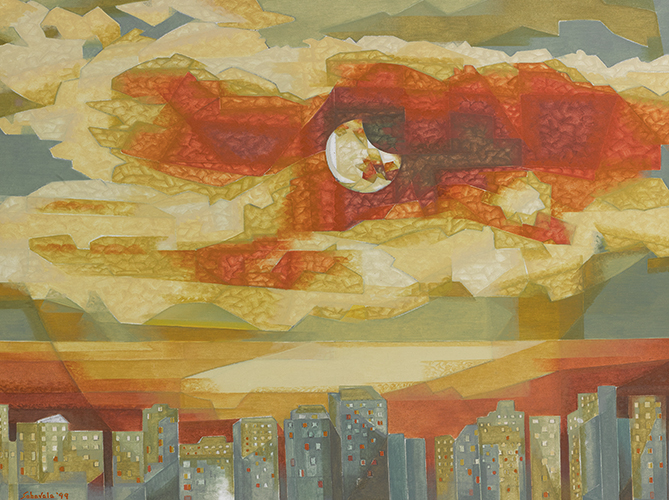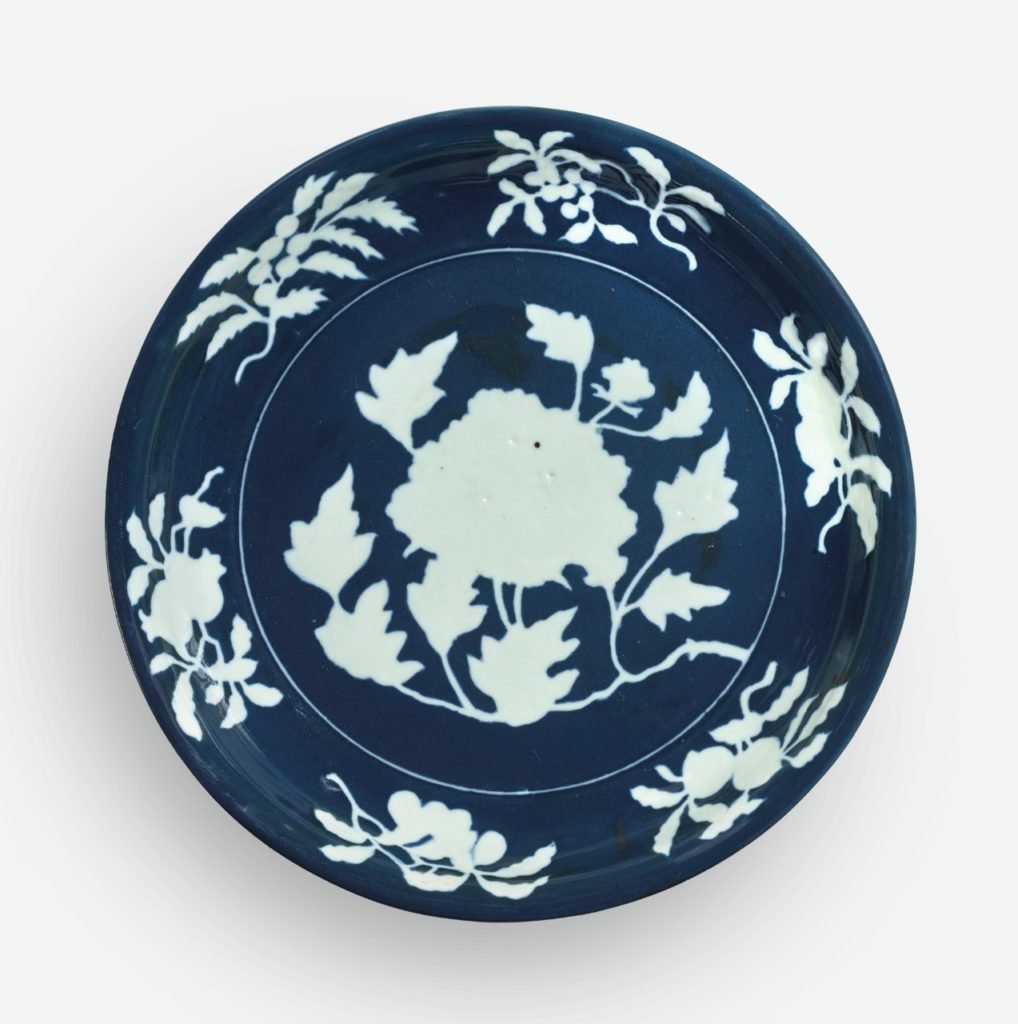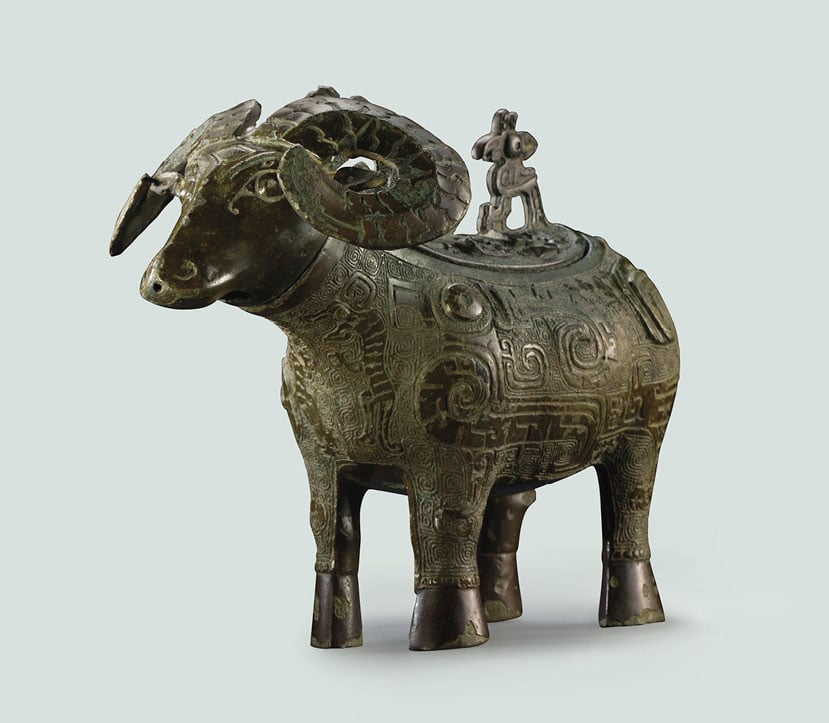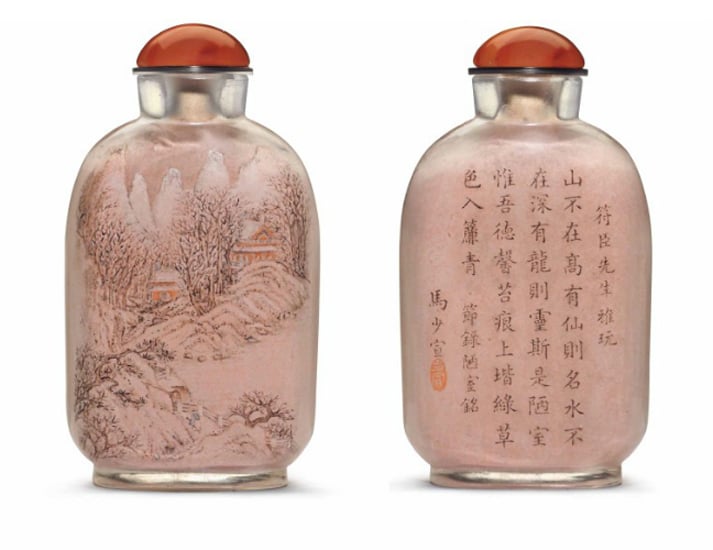Auctions
5 Treasures Up for Auction During Asia Week New York 2017
Prices for these trophies range from $10,000 to $8 million.

Prices for these trophies range from $10,000 to $8 million.

Sarah Cascone

As over 50 international galleries set up shop on the Upper East Side for Asia Week New York (March 9–18), thee of the city’s major auction houses—Christie’s, Sotheby’s, and Bonhams—are all holding sales of Asian art. From ancient to contemporary, painting to ceramics, the auctions feature works originating from all over the continent, including China, Japan, Korea, India, the Himalayas, and Southeast Asia.
Here are just a few highlights from the many treasures on offer.

An Exceptionally Rare and Large Fine Blue and White Reserve-Decorated “Peony” Dish. Xuande mark and period. Pre-sale estimate $1–1.5 million. Courtesy of Sotheby’s.
1. Large Fine Blue and White Reserve-Decorated “Peony” Dish
Coming to the auction block at Sotheby’s “Ming: The Intervention of Imperial Taste” sale on March 17, this peony dish is one of just four lots expected to surpass the million-dollar mark, with a pre-sale estimate of $1–1.5 million. Made during the Xuande reign (1426–35), this royal blue dish sports an extremely rare reverse decoration technique that required an extravagant amount of cobalt to produce. This plate is one of just three examples of similar size, design, and decoration, as the method was considered impractical and soon abandoned.

Bronze ritual ram-form wine vessel, late Shang dynasty, 13th–11th century BC. Pre-sale estimate $6–8 million. Courtesy of Christie’s New York.
2. Bronze ritual ram-form wine vessel
Potentially the most expensive lot of the week, this late Shang dynasty bronze vessel, from the 13th–11th century BC, could go for as much as $6–8 million at Christie’s March 15 sale of “Important Chinese Art From the Fujita Museum.” According to the auction catalogue, “fully sculptural animal-form vessels are the rarest forms of Chinese archaic bronzes,” and this particularly example is unusually naturalistic.

A rare inside-painted glass snuff bottle. Pre-sale estimate $10,000–15,000. Courtesy of Christie’s.
3. A rare inside-painted glass snuff bottle
The most-anticipated item in the March 15 Christie’s auction of “The Ruth and Carl Barron Collection of Fine Chinese Snuff Bottles: Part IV,” this delicate glass bottle is the work of Ma Shaoxuan, whom the house describes as “one of the most technically accomplished artists of the Beijing School of snuff-bottle painting.” It features a landscape and the poem “Lou Shi Ming,” by Tan dynasty scholar-official Liu Yuxi, and is expected to hammer at $10,000–15,000.

A bamboo scepter, China, Ming dynasty. Pre-sale estimate $20,000–30,000. Courtesy of Bonhams.
4. A bamboo scepter, China, Ming dynasty
Harnessing the beauty of the natural world, the Chinese and Japanese turned twisted bamboo rhizomes into polished scepters used in tea ceremonies. This knotted example, available at Bonhams sale “The Zuiun Collection,” on March 15, dates from the 17th century, and is, according to the catalogue, “an extremely wondrous curiosity of nature such as the hand of man could surely never achieve.” The house expects a sale in the range of $20,000–30,000.

Gilt-Bronze Figure of Amitayus. Qing Dynasty, Qianlong Period. Pre-sale estimate $500,000–700,000. Courtesy of Sotheby’s.
5. A Large Gilt-Bronze Figure of Amitayus. Qing Dynasty, Qianlong Period.
Gilded and encrusted with semi-precious stones, this bronze statue of the Buddha Amitayus, or the Buddha of Infinite Light, was created during the 18th century, when the Qianlong emperor turned to Tibetan Buddhism under political pressure. At Sotheby’s “Important Chinese Art” sale on March 14, it could bring in $500,000–700,000.